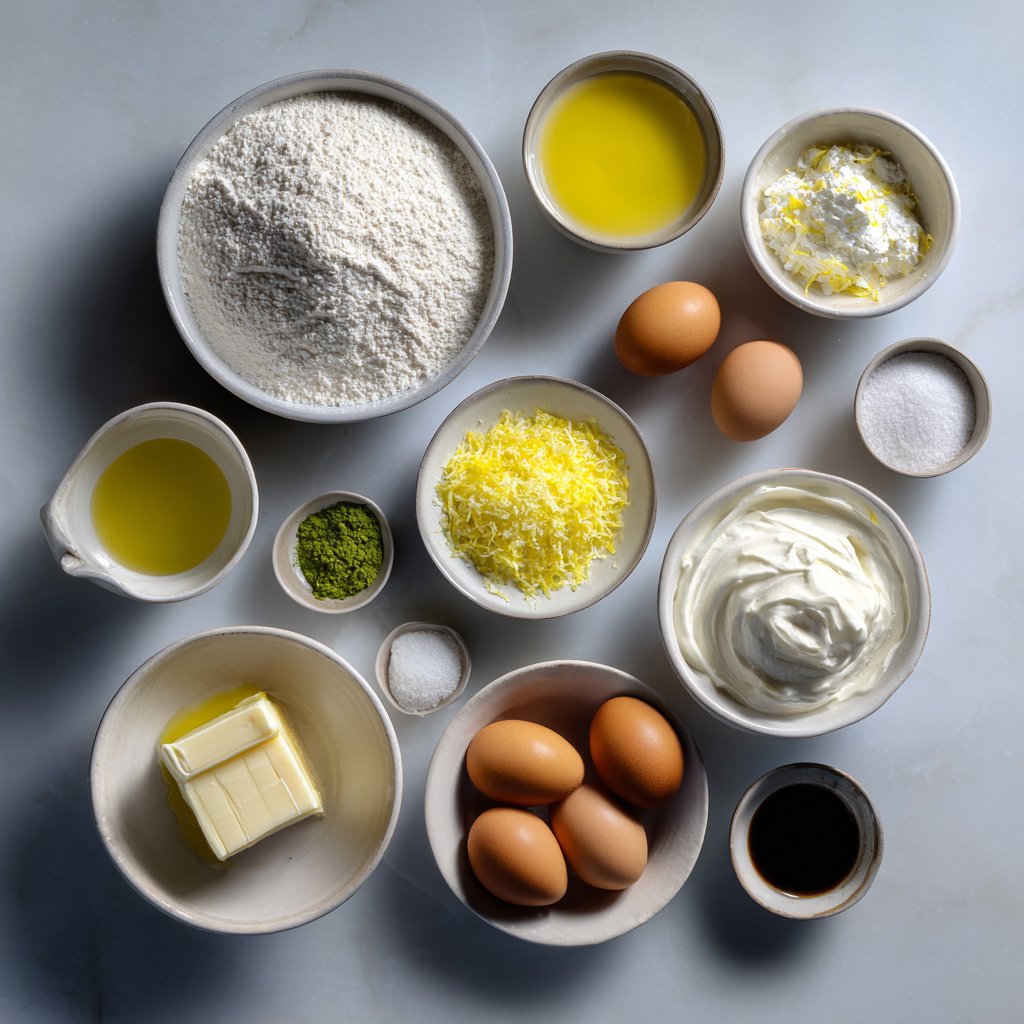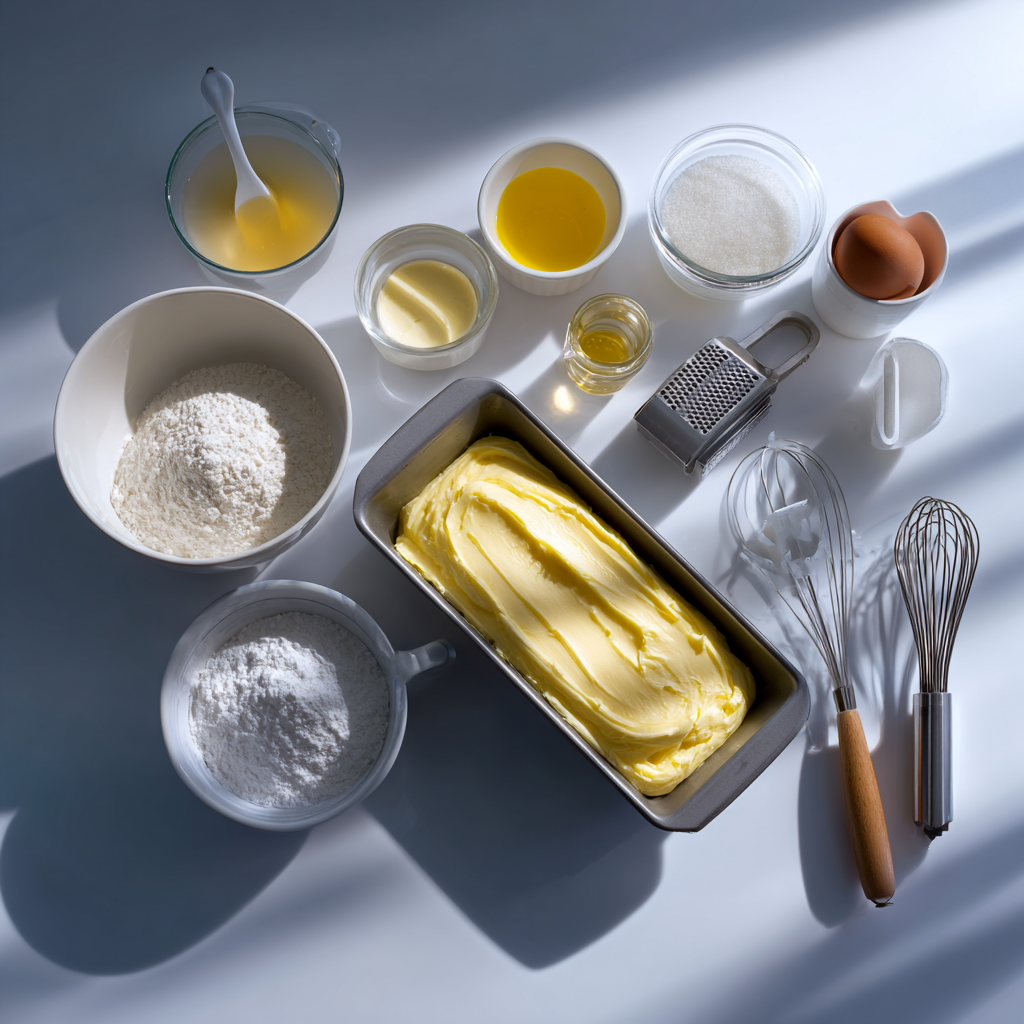Lemon yogurt cake has been one of the most-requested recipes on RecipesTasteful, and for good reason—it’s the perfect balance of tangy, moist, and sweet, with a light crumb that feels homemade yet bakery-perfect. This recipe came to life from my passion for turning simple ingredients into extraordinary treats. On our About page, I share how growing up, I learned to transform every lemon harvest into delightful desserts for family and friends. Over time, experimenting with classics like the Jamie Oliver lemon yogurt cake recipe and the Mary Berry lemon yoghurt cake inspired me to perfect my own version, one that’s not just delicious but easy and reliable for any home baker.
Unlike many recipes floating around—whether it’s the lemon yogurt cake BBC Good Food showcases or quick healthy versions you might see online—this one brings together wholesome Greek yogurt, extra-virgin olive oil, and the zest of fresh lemons to create a cake that’s rich yet refreshing. The olive oil keeps it tender while the yogurt adds creaminess, making every bite feel indulgent without being heavy.
This guide will walk you through everything: the carefully balanced ingredients, step-by-step baking tips, how to make the perfect lemon glaze, and creative variations (including a lighter, healthier twist for those looking to cut down on sugar). Along the way, I’ll share how our community tested this cake to rival even Mary Berry’s lemon yoghurt cake—and why it’s become a favorite for weekend brunches and casual gatherings.
Now, let’s dive into what makes this recipe so special and how you can bake the ultimate lemon yogurt cake in your own kitchen.
Table of Contents
Table of Contents
Why Lemon Yogurt Cake is the Perfect Anytime Treat
The rich flavor and texture of lemon yogurt cake
When it comes to a dessert that feels bright yet comforting, nothing beats a well-made lemon yogurt cake. The first bite delivers a burst of citrus, thanks to freshly grated lemon zest, while the Greek yogurt keeps every slice soft and moist. Unlike heavy butter-based cakes, this version feels light but still satisfying, making it perfect for breakfast, afternoon tea, or as a crowd-pleasing dessert at dinner parties. The balance between the tang of the lemons and the subtle sweetness creates a flavor that lingers without overwhelming your palate.
What truly sets this lemon yogurt cake apart is its texture. The addition of almond flour provides a delicate crumb, while extra-virgin olive oil locks in moisture. This combination gives the cake a tender interior and a slight richness that melts in your mouth. Pair it with a drizzle of tangy lemon glaze, and you have a dessert that feels indulgent without being heavy. For those who love easy, home-baked sweets, it’s hard to find another loaf that delivers such consistent results every time.
Why this lemon yogurt cake stands out from BBC Good Food and Mary Berry recipes
You’ve probably come across the lemon yogurt cake BBC Good Food features or Mary Berry’s popular lemon yoghurt cake. While both are loved, many home bakers find those versions a bit too buttery or not quite as moist after a day or two. That’s where this recipe shines. Using olive oil instead of butter not only creates a softer crumb but also makes it a slightly healthier option without sacrificing flavor.
Inspired by tried-and-true techniques from classics like the Jamie Oliver lemon yogurt cake recipe and Mary Berry’s citrus loaves, this version focuses on balance. It skips overly complicated steps, uses ingredients you likely already have, and bakes into a loaf that stays fresh for several days without drying out. Plus, the addition of almond flour—a trick I discovered while testing recipes for this moist loaf cake collection—adds a nutty undertone that elevates the overall taste.
Whether you’re serving it at brunch, enjoying a slice with tea, or gifting it to a friend, this lemon yogurt cake delivers a bakery-quality experience with minimal fuss. It’s versatile, reliable, and bound to become your go-to citrus dessert recipe.
The Story Behind This Recipe
Every recipe I share comes from years of testing, tweaking, and drawing inspiration from both tradition and innovation.Growing up, our family kitchen always smelled of citrus during spring. My grandmother had her own take on a rustic lemon loaf, and I remember watching her zest lemons while humming along to the radio. It was simple but satisfying, though sometimes dry the next day.
As I developed RecipesTasteful, I wanted to recreate that nostalgic flavor while addressing the flaws I found in many classic recipes. I studied popular versions, from the lemon yogurt cake BBC Good Food recommends to the Mary Berry lemon yoghurt cake everyone swears by, and even the Jamie Oliver lemon yogurt cake recipe with its signature rustic charm. Each had its strengths, but none offered everything I craved: a soft, moist crumb, tangy citrus flavor, and the ability to stay fresh for days.
After months of experimenting with ratios and ingredients, I discovered that combining whole milk Greek yogurt with extra-virgin olive oil achieved exactly what I wanted. The yogurt brought a creamy tang, while the olive oil provided richness and moisture without the heaviness of butter. Almond flour added depth and kept the texture tender, ensuring this cake wasn’t just good out of the oven, but still perfect two days later.
Inspiration from Jamie Oliver and Mary Berry lemon yoghurt cake classics
Jamie Oliver’s recipes taught me the importance of simplicity—using fewer ingredients but with bold flavors. His approach to lemon desserts influenced how I leaned into fresh zest and juice rather than artificial flavorings. On the other hand, Mary Berry’s lemon yoghurt cake showed me how important structure is; her sponge technique inspired the balance between dry and wet ingredients in my final version.
What I ended up creating is a loaf that feels approachable yet elevated. It’s not just a quick bake for busy weekdays, but a centerpiece-worthy cake you can proudly serve at brunch or package as a thoughtful homemade gift. And unlike many recipes, this one works every single time, even for novice bakers.
Ingredients for the Perfect Lemon Yogurt Cake
Print
The Best Lemon Yogurt Cake Recipe for Fresh and Zesty Flavor
- Total Time: 1 hour
- Yield: 8 servings
- Diet: Vegetarian
Description
This Lemon Yogurt Cake is light, moist, and bursting with fresh citrus flavor. Made with creamy yogurt and bright lemon zest, this easy one-bowl cake is perfect for breakfast, tea time, or a refreshing dessert with a dusting of powdered sugar or drizzle of glaze.
Ingredients
- 1 1/2 cups all-purpose flour
- 2 teaspoons baking powder
- 1/4 teaspoon salt
- 1 cup granulated sugar
- 1/2 cup plain Greek yogurt (or regular yogurt)
- 3 large eggs
- 1/2 cup vegetable oil
- 1 tablespoon lemon zest
- 1/4 cup fresh lemon juice
- 1 teaspoon vanilla extract
- Optional glaze: 1 cup powdered sugar + 2–3 tablespoons lemon juice
Instructions
- Preheat oven to 350°F (175°C). Grease and flour a 9×5-inch loaf pan or line with parchment paper.
- In a medium bowl, whisk together flour, baking powder, and salt. Set aside.
- In a large bowl, whisk together sugar, yogurt, eggs, oil, lemon zest, lemon juice, and vanilla until smooth.
- Gradually stir in the dry ingredients until just combined, being careful not to overmix.
- Pour the batter into the prepared pan and smooth the top.
- Bake for 45–50 minutes, or until a toothpick inserted into the center comes out clean.
- Let the cake cool for 10 minutes in the pan before transferring to a wire rack to cool completely.
- If desired, whisk powdered sugar and lemon juice to make a glaze and drizzle over the cooled cake.
Notes
- For extra lemon flavor, add an additional tablespoon of zest or a splash of lemon extract.
- Replace some of the flour with almond flour for a nutty twist.
- This cake can be stored at room temperature for 3 days or refrigerated for up to 5 days.
- Freezes well for up to 2 months; thaw at room temperature before serving.
- Prep Time: 10 minutes
- Cook Time: 50 minutes
- Category: Dessert
- Method: Baking
- Cuisine: American
Nutrition
- Serving Size: 1 slice
- Calories: 280
- Sugar: 22g
- Sodium: 150mg
- Fat: 12g
- Saturated Fat: 2g
- Unsaturated Fat: 9g
- Trans Fat: 0g
- Carbohydrates: 38g
- Fiber: 1g
- Protein: 5g
- Cholesterol: 55mg
Exact measurements for moist, fluffy results

The magic of a perfect lemon yogurt cake lies in its balance. Every ingredient in this recipe plays a role in delivering that tender crumb and refreshing citrus kick. Here’s what you’ll need to bake a loaf that rivals even Mary Berry’s lemon yoghurt cake and the Jamie Oliver lemon yogurt cake recipe while keeping it simple:
- 1 cup all-purpose flour, spooned and leveled
- ½ cup almond flour, spooned and leveled (for a delicate, nutty texture)
- 2 teaspoons baking powder
- ¾ teaspoon sea salt
- ½ cup cane sugar (for a gentle sweetness)
- 1 tablespoon lemon zest, plus extra for sprinkling on top
- ¾ cup whole milk Greek yogurt (adds richness and tang)
- ½ cup extra-virgin olive oil, plus more for greasing the pan
- 2 large eggs
- 1 teaspoon pure vanilla extract
- Lemon glaze (for drizzling, recipe included below)
This combination ensures a loaf that’s moist but not dense, with just enough structure to slice cleanly. The almond flour not only lightens the texture but gives the cake a subtle complexity you don’t get from plain flour alone. And while some versions, like the lemon yogurt cake BBC Good Food showcases, rely heavily on butter, using olive oil makes this loaf softer and gives it a fruity undertone that pairs beautifully with the lemon.
Why Greek yogurt and olive oil make this lemon yogurt cake healthier
One of the reasons this lemon yogurt cake stands out is how it balances indulgence with a touch of nutrition. Whole milk Greek yogurt adds protein and creaminess, replacing some of the fat you’d typically get from butter. Olive oil, on the other hand, brings healthy monounsaturated fats while also preventing the cake from drying out, even after a few days.
This oil-based approach is why so many people search for “lemon yogurt cake with oil” over traditional versions. Not only does it create a lighter, moist texture, but it also makes the cake easier to digest for those avoiding heavy dairy-based desserts. Paired with a modest amount of cane sugar, the result is a treat that feels decadent but doesn’t weigh you down.
Hosting a brunch spread? Pair this loaf with other homemade favorites, like our chewy oatmeal cookies recipe, to create a balanced mix of textures and flavors your guests will love.
Step-by-Step Guide to Baking Lemon Yogurt Cake

How to prepare the batter for perfect rise and moisture
Getting the perfect lemon yogurt cake starts with handling the ingredients the right way. Begin by preheating your oven to 350°F and greasing an 8×4-inch loaf pan with olive oil. In a large mixing bowl, whisk together the all-purpose flour, almond flour, baking powder, and sea salt until evenly combined. This dry mix creates the base for a fluffy yet structured loaf.

In another bowl, combine the cane sugar and lemon zest. Rub them together with your fingertips for about 30 seconds—this releases the oils in the zest, intensifying the lemon aroma. Whisk in the Greek yogurt, olive oil, eggs, and vanilla until smooth. The combination of Greek yogurt and olive oil gives this cake its signature tender crumb, setting it apart from butter-heavy recipes like the lemon yogurt cake BBC Good Food version or even Mary Berry’s denser sponge.
Slowly fold the dry ingredients into the wet mixture, stirring gently until just combined. Overmixing can make your cake tough, so stop as soon as you no longer see dry streaks. Pour the batter into your prepared loaf pan and smooth out the top.
Baking tips: temperature, timing, and tricks for golden perfection
Bake the loaf for 40 to 50 minutes, or until a toothpick inserted into the center comes out clean. If the top begins to brown too quickly, tent the loaf with aluminum foil during the last 10 minutes. The olive oil in this recipe helps create a golden crust without drying the interior, something many butter-based lemon yogurt cake recipes struggle to achieve.
Once baked, allow the cake to cool in the pan for 10 minutes before transferring it to a wire rack. Cooling completely before glazing is essential, as a warm cake will cause the lemon glaze to slide off instead of soaking in beautifully.
For extra flavor, sprinkle a little lemon zest over the top once glazed—it not only adds brightness but also makes the cake visually pop, giving it that bakery-style finish.
Making the Perfect Lemon Glaze

Simple lemon glaze recipe for a bright, tangy finish
A lemon yogurt cake isn’t complete without its signature glaze. The drizzle not only adds a glossy, bakery-style finish but also deepens the citrus flavor that makes each bite irresistible. The best part? You only need a few pantry staples:
- 1 cup powdered sugar
- 2 tablespoons fresh lemon juice
- 1 teaspoon lemon zest (optional for extra brightness)
In a small bowl, whisk the powdered sugar with the lemon juice until smooth. The glaze should be pourable but not watery—if it’s too thin, add more sugar; if it’s too thick, add a touch more lemon juice. Stir in the lemon zest for added zestiness, then set aside while the cake cools.
Once the lemon yogurt cake has completely cooled, drizzle the glaze evenly across the top, letting it drip naturally down the sides. The slight tang balances the sweet crumb, elevating the loaf beyond a simple lemon bread. Unlike heavier glazes seen in some BBC Good Food or Mary Berry lemon yoghurt cake recipes, this version keeps things light, enhancing flavor without overpowering the delicate texture.
Drizzling and garnishing for bakery-quality presentation
The secret to making your lemon yogurt cake look as good as it tastes lies in the garnish. After glazing, sprinkle a pinch of extra lemon zest over the top for a pop of color and a hint of fresh aroma. For a rustic touch, you can even add thinly sliced candied lemon rounds along the top of the loaf.
If serving for a special brunch or gathering, slice the cake into even portions and pair each piece with a small dollop of whipped cream or a few fresh berries. This presentation not only looks stunning but also enhances the cake’s refreshing citrus notes.
If you’re exploring more guilt-free treats, check out our moist zucchini cake recipe for another soft, nutrient-packed dessert that pairs perfectly with lighter, citrusy bakes like this lemon yogurt cake.
Variations and Creative Twists

Turning this into a lemon yogurt cake healthy option
If you’re looking for a lighter take on the classic lemon yogurt cake, there are easy tweaks that don’t sacrifice flavor. Swap half the cane sugar for coconut sugar or honey to lower the refined sugar content. You can also use low-fat Greek yogurt instead of whole milk yogurt, which trims calories while still delivering that creamy tang.
Another trick is reducing the glaze or using a thinner drizzle made with lemon juice and just a dusting of powdered sugar. This keeps the cake bright and flavorful without adding unnecessary sweetness. These adjustments are perfect for anyone searching for “lemon yogurt cake healthy” ideas while still craving the signature softness and zing this loaf delivers.
If you’re exploring more guilt-free treats, check out our list of wholesome dessert swaps for easy ways to adapt your favorite sweets without losing taste.
Using oil vs butter: the benefits of olive oil in flavor and texture
Many traditional lemon yogurt cake recipes, like those you’ll find on BBC Good Food or from Mary Berry, rely on butter to create richness. Olive oil, on the other hand, locks in moisture, helping the loaf stay soft for days after baking. It also introduces a subtle fruitiness that complements the lemon, making each bite taste fresher.
For bakers seeking a smooth, tender crumb with a slightly healthier fat profile, olive oil is the clear winner. Plus, it pairs beautifully with almond flour, enhancing the nutty undertones without overpowering the citrus. This combination is why so many home bakers specifically look for “lemon yogurt cake with oil”—it delivers texture, flavor, and shelf life that butter-based versions can’t match.
By experimenting with these variations, you can make this loaf uniquely yours, whether you prefer a classic indulgent slice or a lighter, more wholesome version.
Looking for more inspiration beyond citrus? Try experimenting with other moist loaves like this chocolate zucchini bread, which brings a rich, earthy flavor and pairs perfectly with a lighter dessert like lemon yogurt cake.
Storing and Serving Tips
How to keep your lemon yogurt cake moist for days
One of the best parts about this lemon yogurt cake is how well it holds up over time. Thanks to the Greek yogurt and olive oil, this loaf stays moist for up to four days when stored properly. After it cools completely, wrap the cake tightly in plastic wrap or place it in an airtight container. Store at room temperature for two days, or in the refrigerator for longer freshness.
If you prefer a freshly baked feel, you can warm individual slices in the microwave for 10–15 seconds before serving. This helps revive the soft crumb and intensifies the lemon aroma. Freezing is also an option—slice the loaf, wrap each piece individually, and freeze for up to two months. When ready to enjoy, thaw a slice at room temperature or warm it gently in the oven.
For more expert tips on extending the life of homemade treats, check out our guide on storing baked goods, where we share easy ways to keep cakes and loaves tasting fresh.
Best drinks and pairings to elevate your dessert
A slice of lemon yogurt cake pairs beautifully with a range of beverages and accompaniments. For a morning treat, enjoy it with a hot cup of Earl Grey or chamomile tea—the citrus notes naturally complement each other. For dessert, try pairing it with a sparkling lemonade or even a glass of prosecco for a celebratory touch.
You can also elevate the experience by serving each slice with a dollop of whipped cream, a spoonful of Greek yogurt, or a few fresh berries. These simple additions not only enhance the presentation but also balance the tangy sweetness of the loaf. Whether you’re hosting brunch or just indulging at home, these pairings turn a humble lemon yogurt cake into a full sensory experience.
For a complete brunch experience, serve this loaf with a refreshing drink like this strawberry banana smoothie. Its creamy sweetness balances the tangy lemon flavor beautifully.
People Also Search For & FAQs
Jamie Oliver lemon yogurt cake recipe vs this version
The Jamie Oliver lemon yogurt cake recipe is a favorite for its rustic, no-fuss approach, but many bakers find it leans slightly dense and needs a glaze to bring the citrus flavor forward. This version takes inspiration from Oliver’s straightforward method but adds almond flour and extra-virgin olive oil for a lighter, moister loaf that holds its flavor for several days. The use of Greek yogurt instead of regular yogurt also gives a creamier texture and tang, making each slice feel rich but not heavy.
Mary Berry lemon yoghurt cake tips
Mary Berry’s lemon yoghurt cake is well-known for its classic sponge structure, but her recipes often call for butter, which can make the cake drier after a day or two. To capture Berry’s light sponge texture without sacrificing moisture, this recipe swaps butter for olive oil, creating a tender crumb that stays soft. It also uses almond flour to mimic the airy texture of her sponges while offering more depth of flavor.
Lemon yogurt cake healthy swaps
For those seeking a “lemon yogurt cake healthy” twist, this recipe can easily be adapted. Swap half the cane sugar for coconut sugar or honey, and use low-fat Greek yogurt instead of whole milk. You can even opt for a lighter glaze—simply mix lemon juice with a dusting of powdered sugar for a fresh, tangy finish without extra calories.
BBC Good Food lemon yogurt cake differences
The lemon yogurt cake BBC Good Food showcases is simple but tends to dry quickly, especially without a glaze. This recipe improves on that by combining Greek yogurt and olive oil, both of which help retain moisture. It also includes almond flour, which adds a subtle nuttiness and prevents the cake from feeling too plain. The result is a loaf that stays soft and flavorful for days, even without heavy frosting.




